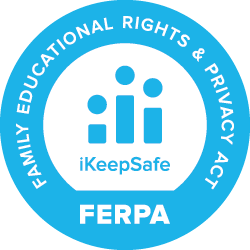DEV VERS - An Invitation to Recycling
Begin with recycling, continue with creativity, and end with a celebration!
Resource Title:
An Invitation to Recycling
Description:
Begin with recycling, continue with creativity and end with a celebration. Makes for a good collaborative lesson between Science and Art teachers.
Target Grade Level:
Grades K-4
Discipline or Course (Audience):
Science
Time Frame:
Two 90-minute sessions
Suggested Grouping:
3-4 students
Educator Prep:
Paper recycling is one of the real success stories of the industry. Paper and other forms of fiber comprise one of the most widely recycled materials in the world. Americans have recycled more than a billion tons of paper. The materials are used for new packaging and paper. More than 75 percent of paper mills rely on recovered fiber to make some of their products. The US has recycled about 338 pounds of paper for every person in the country-- nearly two-thirds of what we use. This not only saves trees, but energy.
The essential component of paper is cellulose. It is a polysaccharide that is indigestible to humans and most other animals (although termites have protists in their guts and many breeds of cattle have bacteria in their rumen that make it possible for them to use it as food.)
The properties of cellulose make it both resilient (giving plants strength) and exceptionally useful for recycling. It is the essential molecule that gives wood and paper products their strength. When cellulose fibers are soaked in water, hydrogen bonding occurs among the hydroxyl (OH-) groups on the surface of the fibers, causing them to cling together. Once these bonds are formed, removal of the water (drying) causes these bonds to strengthen even more, resulting in a strong sheet or mesh of fibers that we call paper. That’s the process that students will recreate in the paper-making activity in this unit.
Preparation Directions:
- Gather materials.
- One week prior to this activity, have students keep track of all the paper the class uses by saving all paper recycling bins and having students make sure they discard paper products appropriately as part of the data collection process.
- You might label several different bins or boxes during this time period to mark the different categories such as: white paper; colored paper; newspaper; cardboard; other.
- You might also have students collect and bring in materials like bits of thread, petals from silk flowers, glitter or anything else that is tiny and resistant to water.
Teacher Directions for Part 1: Collecting Data:
Have students keep track of the amount of paper they use as a class in a week. This can be done in terms of number of sheets of paper, or mass. To save paper, consider projecting this information onto a screen once tabulated. For younger children, this may be sufficient. Have older students create a table, graph, or chart to illustrate their paper use for the week. Have students come up with reasons they may be keeping track of this.
Older students may also be able to calculate how much paper the class uses in a month and a year. If applicable, guide them through these calculations as needed.
For more advanced students, you might also have them calculate how many trees the amount of paper the class uses translates to. Although note that this measurement is more complex to determine because every tree is a different size, and different methods of making paper require different amounts of pulp. Moreover, different kinds of trees produce different amounts of paper as well (hardwoods vs. softwoods). However, Web Link - Conservatree.org offers a few good insights as to how this conversion can be done. One of the easier calculations is that one tree, 40 feet tall and 6-8 feet in diameter, produces approximately 17 reams of office paper (one ream contains 500 sheets). Students calculate how much the class will use in a year, and “translate” that to trees. Depending on grade and ability, you may do this with students as a class or let them do their own calculations.
When introducing the term cellulose, you might also discuss how most animals, including humans, can’t digest cellulose. Animals that can digest cellulose include cows, horses, sheep, and goats because they have a special kind of bacteria that live inside their stomachs to help break it down. Because cellulose is so strong, it can be reused several times to make new paper after the old paper has been used.
Teacher Directions for Part 2: Make Paper:
Lead students through the process of making paper!
Article - The Scrap Map shows how newspapers are converted into cardboard boxes and can be projected for the class to review and consider.
At one station, you will need a frame and deckle. These are simple to make and useful. You can use old picture frames or cut the frame yourself.
Staple window screening or nylon mesh to the smaller frame, so that the paper/water mixture can be spread thinly across it and dried.
There is no set pattern for the paper that students produce. When they dry, irregular mats of paper can be cut into any shape students prefer and can be as simple or elaborate as they prefer.
Don’t forget to emphasize the science! The same resilience that makes the cellulose in the recycled paper suitable for recycling is what makes it so valuable for commercial and industrial uses in industry.
Teacher Directions for Extension Activity:
Have students plan a celebration of recycling event. Students can then use the paper they make to prepare invitations to the event. This event could include:
- Artwork students created from re-purposed paper, plastic, and other materials;
- Presentations and/or posters on the benefits of recycling and repurposing;
- Photos of items in the school area that are made from recycled products.
- Participation by special guests like the school custodian or the municipality’s sanitation supervisor;
- Quick art activities/stations using recycled products;
- Games or challenges using recycled products or re-purposed items.
Review suggestions for Web Link - The Recycle Games
Safety:
- Always review safety procedures before starting any experiment. Follow district guidelines when engaging in labs.
- Ensure all materials and equipment are age-appropriate and approved by the district.
- Supervise students closely and stop any unsafe behavior right away.
- Provide and model the correct use of goggles, gloves, and other protective equipment when needed.
- Prepare a clean-up and emergency plan, including access to first aid and safety data sheets.
Remote Learning Adaptations:
This activity can be conducted over video conferencing as a demonstration.
STUDENT CONTENT BELOW
Do you know where paper comes from? If you said trees, you are right! Paper is made from a chemical called cellulose. Cellulose is found inside plants and trees. Cellulose is strong stuff! In this activity, you will find out how much paper your class uses in a week. You will then think about ways to reuse and recycle the paper you use for schoolwork to help the environment.
Materials:
- Device with internet access
- Sponges
- Paper towels
- Scraps of paper (collected, cut, and soaked for at least four hours)
- Blender
- Water
- Bits of colored thread and/or tiny leaves and petals from old silk/cloth flowers
- Large dishpan
- Liquid starch (or starch packing pellets dissolved in water)
- Two pieces of flat plywood or laminate that fit inside the dishpan
- A deckle (a wooden frame used in manual paper making) and a frame with a piece of nylon or mesh stapled to it for paper making
- Colored paper and newsprint
Safety Notes:
- When using technology, engage in safe, legal, and ethical behavior; this applies to devices (hardware), applications or programs (software), and interactions with others.
- Be sure to follow all directions from your teacher very closely and take special care when handling the scissors and blender.
- Listen carefully to all safety instructions before starting.
- Wear goggles and gloves when told to do so.
- Never touch, taste, or smell anything unless your teacher says it’s safe.
- Stay at your station and use science tools carefully.
- Tell the teacher right away if there is a spill, break, or accident.
- Wash your hands after every experiment.
Part 1: Collect Data:
This week we will find out how much paper your class uses in one week by counting or weighing the paper your class has collected. Show the information in terms of number of sheets, weight or mass. How might we collect our data? Do we need a table or a graph?
Stretch Your Thinking:
Can you figure out how many trees your class would use in a year if one tree makes 17 reams of paper, and each ream contains 500 sheets of office paper?
Part 2: Make Paper:
It’s time to turn old paper into something brand new. Can you guess what we are creating? Your very own handmade paper! Follow the steps below with your teacher’s help.
Prep Your Paper:
- Tear or cut your used paper into the smallest pieces possible. The smaller, the better!
Add Decorations (Optional):
- Mix in small extras like bits of colored thread, flower petals, or glitter to make your paper special.
Blend the Pulp:
- Fill the blender halfway with paper bits.
- Add warm water until it’s about ¾ full.
- Let it soak for 2–3 minutes.
- Your teacher will blend the mixture until it’s smooth and you can’t see the paper pieces anymore.
Make the Starch Mix:
- In a separate bowl or pitcher, add 1–2 teaspoons of liquid starch OR 2–3 starch peanuts.
- Add 2 cups of warm water and stir until it dissolves completely.
Combine the Mixtures:
- Pour the paper pulp into a large pan.
- Add the starch mixture and stir well.
Create the Paper Sheet:
- Place your mesh screen or deckle into the pan.
- Gently scoop the pulp mixture onto the screen in a thin, even layer.
Remove the Water:
- Lay a towel or cloth over the wet pulp.
- Use a sponge or rolling pin to press out extra water.
Dry the Paper:
- Carefully lift the wet paper (still on the screen) and lay it flat on a clean towel or newspaper.
- Let it dry completely. Check back tomorrow to see if it is dry.
Finish It Up:
- Once dry, gently peel your new sheet of paper off the screen.
- You now have your handmade paper!
Reflect and Apply:
- What did you enjoy most about the process of making paper?
- What is something new you learned today?
- Where does paper come from?
- What is cellulose, and why is it so important?
- Thinking about the process of making paper, what would you do differently?
- Why do you think recycled paper is important?
- List some other ways you can reuse paper.
Extension:
- With your class, plan an event that shows the importance of recycling. You might use photos of recycled products, graphs of what we can save by recycling, or projects made from reused paper to show unexpected treasures. Create invitations out of the paper you made! Make your celebration fun by challenging those who attend to commit to recycling.
- Draw a picture of what the Earth would be like if there were no trees.

.jpg)



